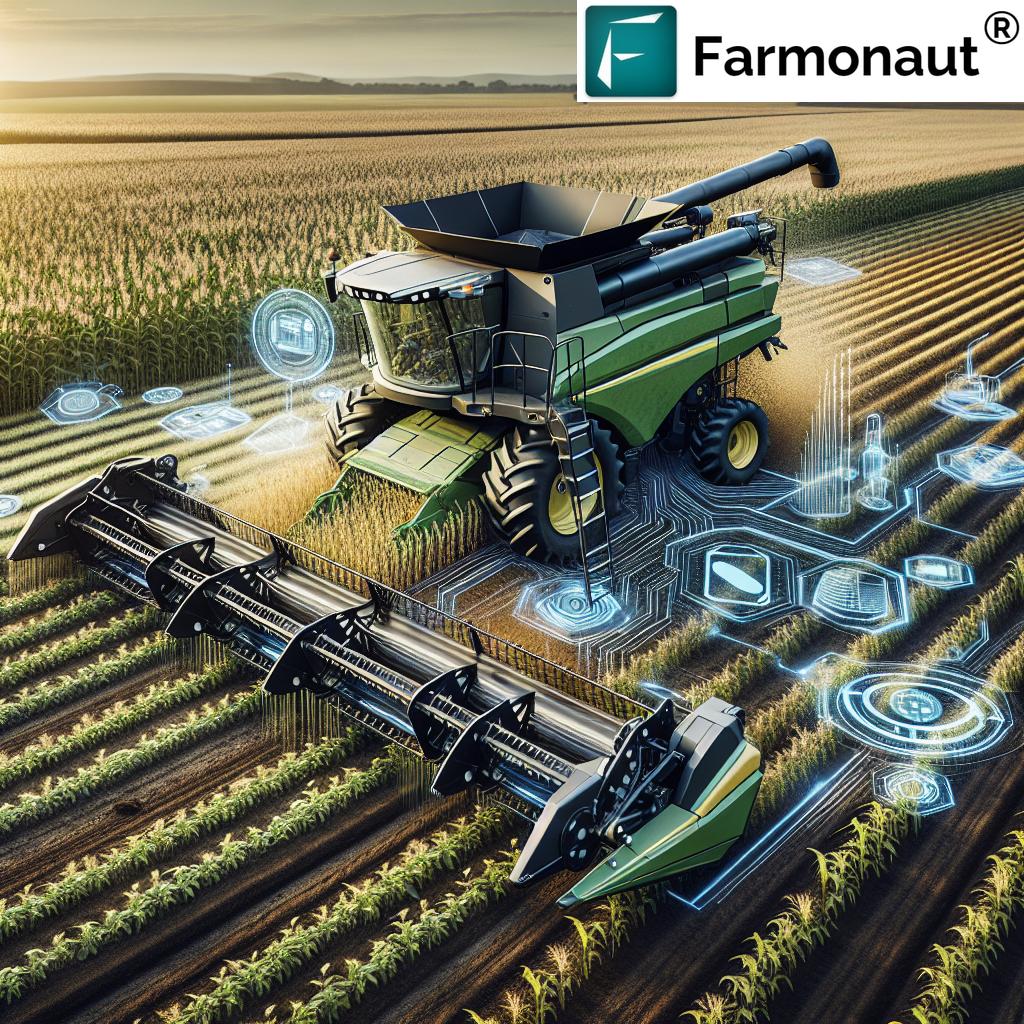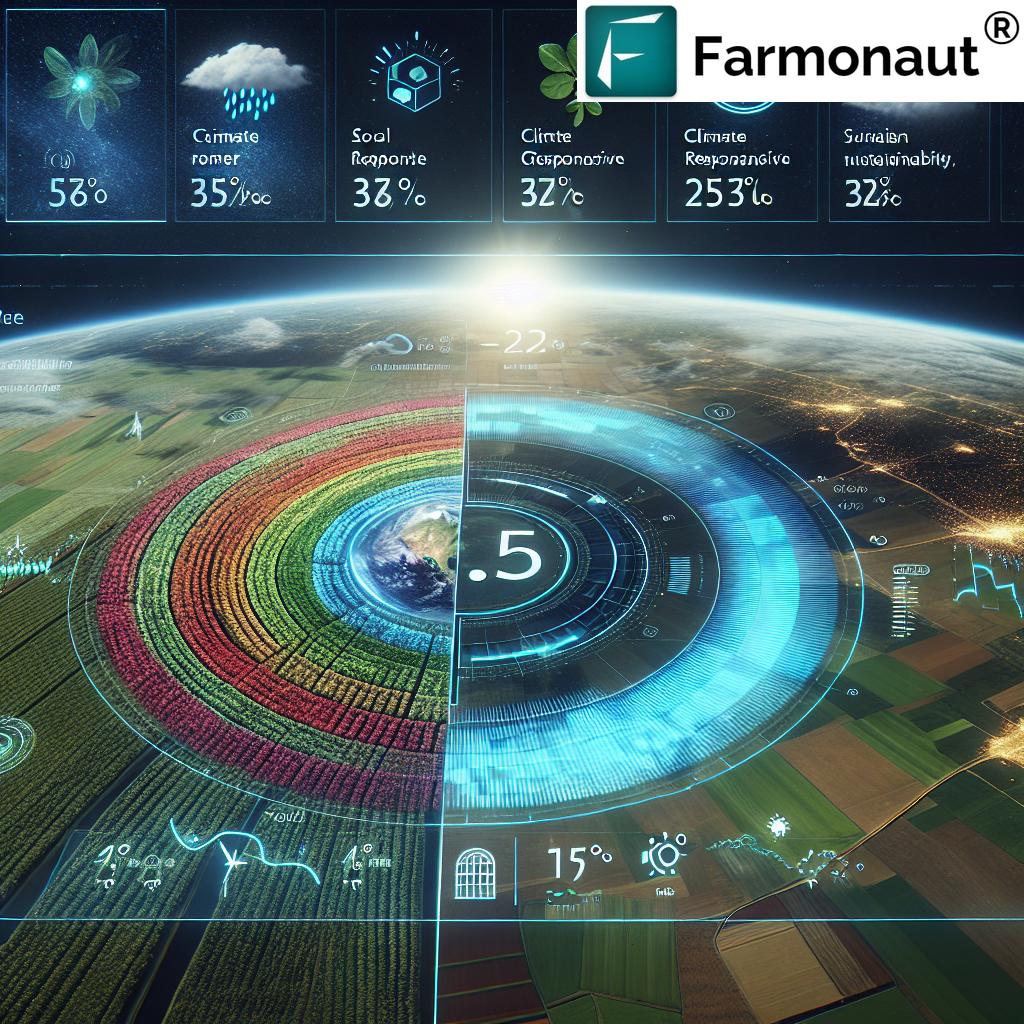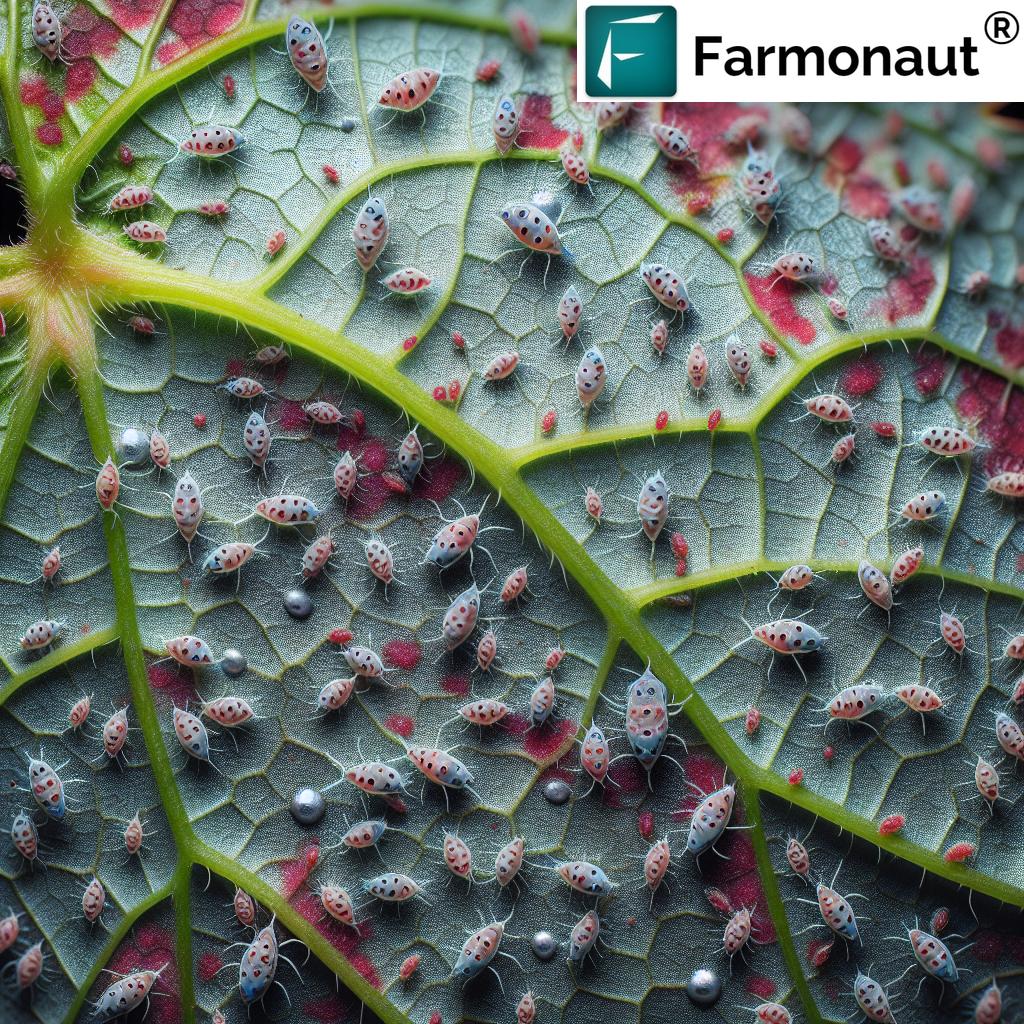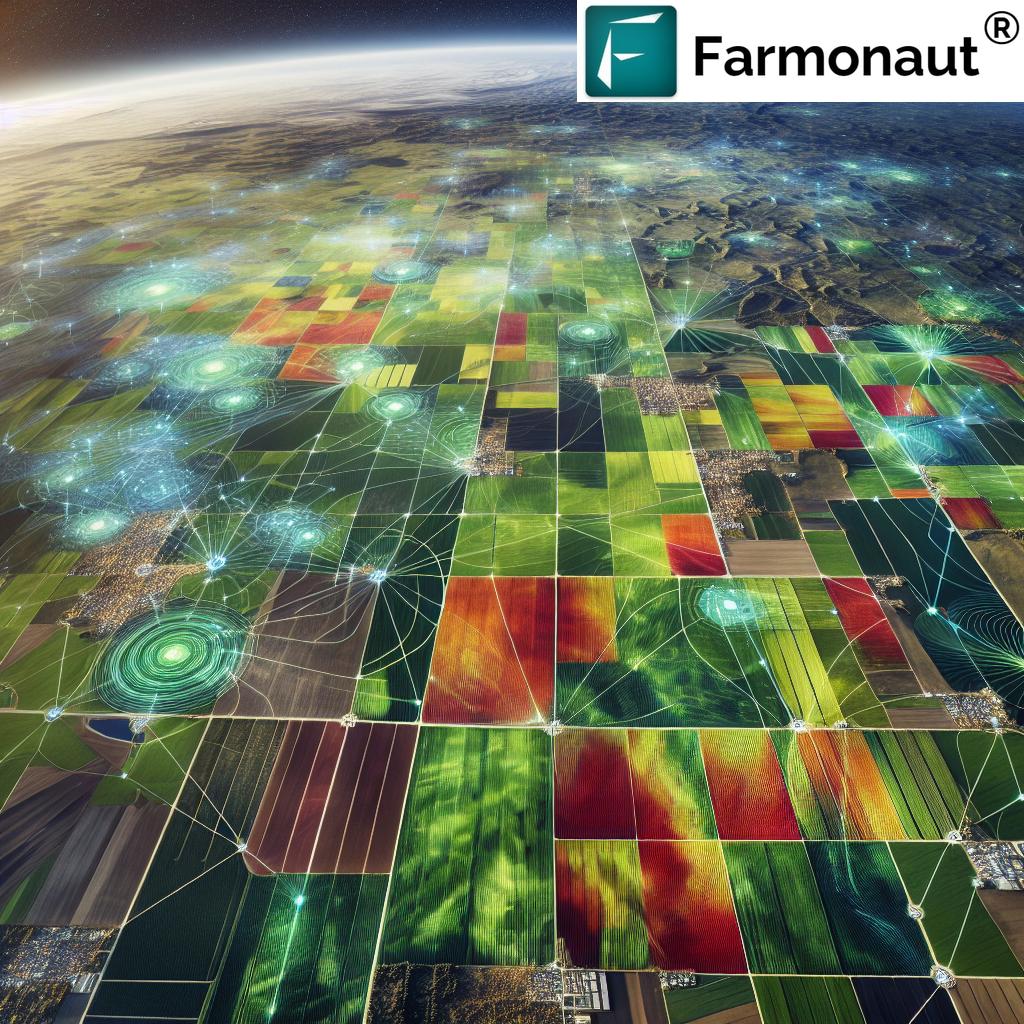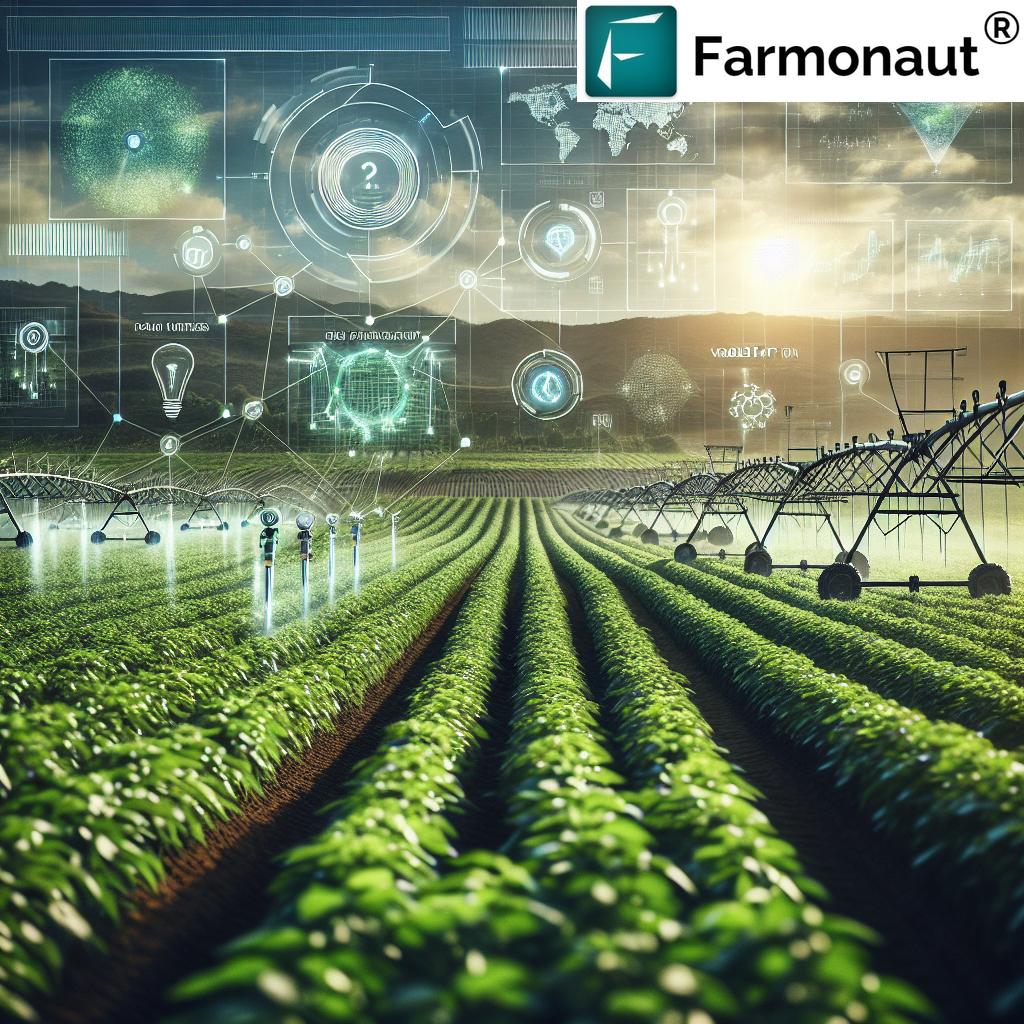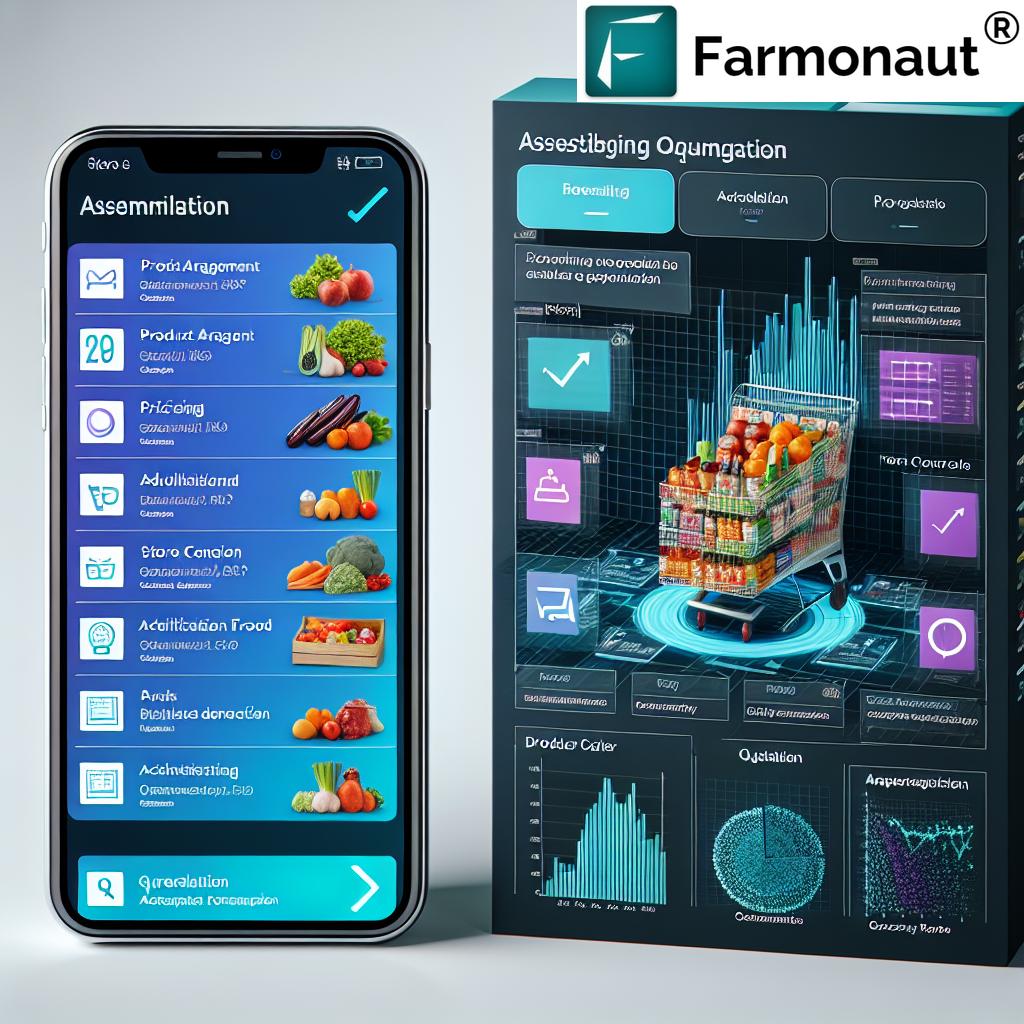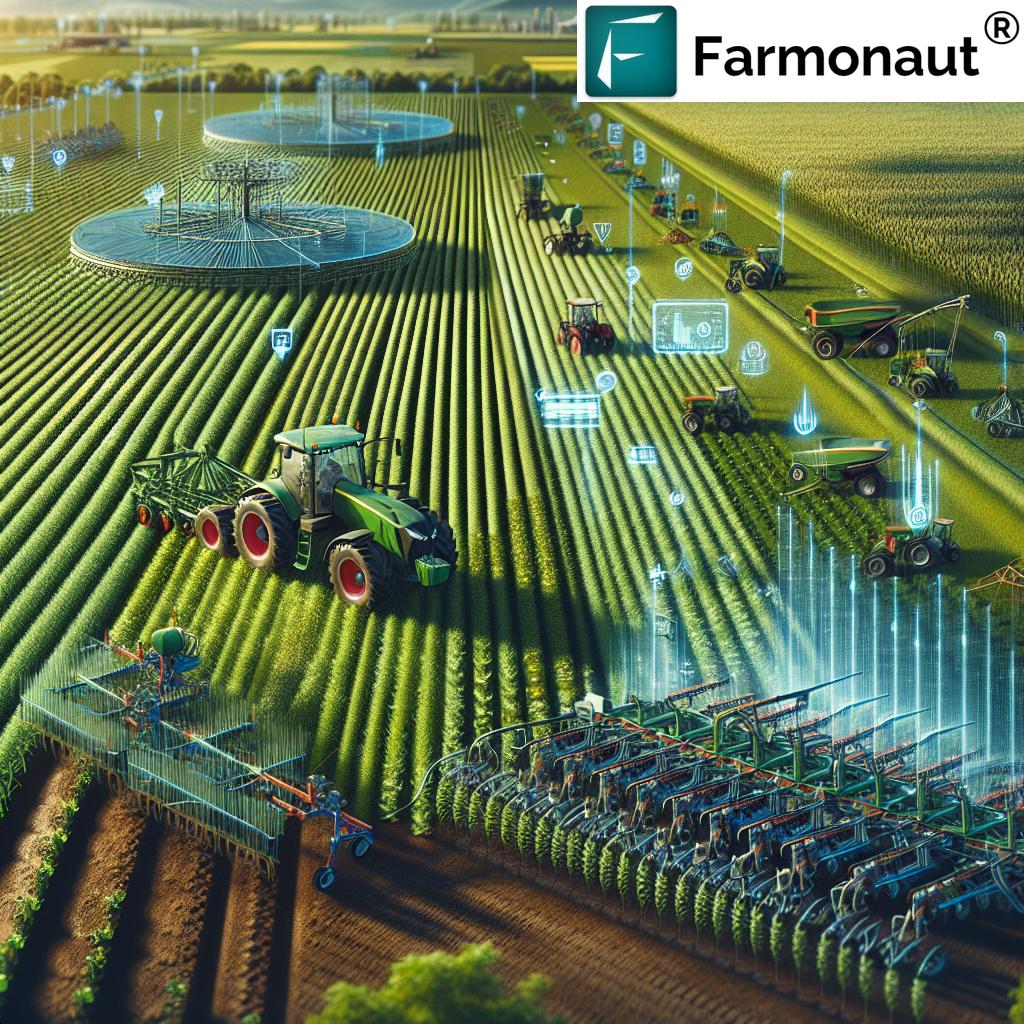Arable Crop Production Techniques to Boost Yield: Advanced Methods for Sustainable High-Yield Farming
Summary: Arable crop production encompasses the cultivation of crops on plowed and tilled land, focusing on maximizing yield and quality through various techniques. Advancements in agriculture have introduced several innovative methods—such as conservation agriculture, precision agriculture, and automated farming technologies—to enhance productivity, sustainability, and environmental stewardship. In this comprehensive guide, we explore the most effective, technologically advanced strategies and systems that are shaping the future of sustainable crop production.
- What is Arable Crop Production?
- Comparative Table: Crop Production Techniques
- Conservation Agriculture: Soil Health & Sustainability
- No-Till Farming: Soil Protection and Efficiency
- Precision Agriculture: Data-Driven Farming
- Integrated Pest Management: Sustainable Pest Controls
- Crop Rotation Methods: Boosting Soil & Yield
- Controlled-Environment Agriculture (CEA): Maximizing Yield, Minimizing Risk
- Automation, Robotics & Machine Synchronization
- Yield Monitoring and Mapping: Data for Decision-Making
- Modeling, AI & Scenario Planning in Modern Farms
- How Farmonaut Empowers Precision Crop Production
- FAQ
- Conclusion: Towards Sustainable Crop Production
What is Arable Crop Production?
Arable crop production refers to the cultivation of crops on plowed and tilled land—distinct from permanent pasture or forestry—using modern agriculture and farming techniques for optimizing yield and quality.
The goal is to maximize productivity while maintaining soil health, improving resource efficiency, and ensuring sustainable stewardship of the land.
Today, arable farming integrates environmentally conscious practices, ranging from conservation agriculture and no-till farming to automation, data-driven precision agriculture, and integrated systems for soil, pest, and resource management.
Key principles of arable crop production:
- Maximizing Crop Yields: Applying innovative techniques and technologies to achieve higher and more reliable yields per hectare.
- Optimizing Soil Health: Employing crop rotation methods, conservation agriculture, and advanced monitoring to maintain or enhance soil fertility and structure.
- Efficient Resource Use: Leveraging tools like automated farming technologies and precision nutrient/water management for sustainable growth.
- Environmental Stewardship: Integrating biological processes, cover crops, and reduced tillage to sustain natural ecosystems and biodiversity.
- Adaptation & Resilience: Combining on-farm data, weather-adapted modeling, and IPM for climate-resilient, sustainable crop production.
Comparative Table: Innovative Arable Crop Production Techniques & Impact
| Technique | Key Technologies Used | Estimated Yield Increase (%) | Impact on Soil Health | Sustainability Rating | Adoption Level (Estimated % of Farms) |
|---|---|---|---|---|---|
| Precision Agriculture | Satellite Remote Sensing, Drones, AI, IoT Sensors, Yield Mapping | 10–25% | Significantly Improved | High | 30–40% |
| Conservation Agriculture | No-Till, Permanent Cover Crops, Rotation Planning | 8–18% | Greatly Enhanced | High | 20–30% |
| Automation & Robotics | Self-steering Tractors, Automated Planters/Harvesters, Robotics | 12–20% | Improved (less compaction, precise ops) | High | 10–20% |
| Remote Sensing & Yield Monitoring | Satellites, Drones, Sensor Networks, Cloud Platforms | 10–22% | Moderately Improved | High | 30–50% |
| Crop Rotation | Rotation Planners, Soil Analysis Tools | 7–16% | Highly Enhanced | Medium-High | 60–75% |
| Integrated Pest Management | Monitoring, Biocontrol, Decision Threshold Models | Up to 12% | Significantly Improved | Very High | 60%+ |
| Controlled-Environment Agriculture (CEA) | Automated Greenhouses, Sensors, Climate Control, Hydroponics | 30–50% | Maximally Enhanced (fully controlled) | Very High | 5–10% |
Conservation Agriculture: Soil Health & Sustainability
Conservation agriculture is a farming system that aims to prevent losses of arable land and regenerate degraded lands through practices focused on minimum soil disturbance (no-till/zero-till), permanent soil cover (living or dead plant residues), and diversification of plant species. The result is a system that supports biodiversity, natural biological processes, and sustainable crop production.
- Minimum Tillage: Drastically reduces soil disturbance, which maintains structure, preserves organic matter, and reduces erosion.
- Permanent Cover: Cover crops (like clover, vetch, or rye) or crop residues shield the soil, curbing runoff and boosting moisture retention.
- Plant Diversity: Rotating and diversifying species (e.g., legumes, cover crops, cereals) enhances nutrient cycling and breaks pest/disease cycles.
- Water and Nutrient Efficiency: Less bare ground means increased infiltration and less evaporation, leading to the efficient use of resources.
- Biodiversity & Biological Processes: Intensifies life in and on the soil, promoting natural controls and overall system resilience.
Real-world studies indicate that with broad adoption, conservation agriculture can increase yields by 8–18%, improve soil structure, reduce input costs, and increase the sustainability of crop production in the long term.
For satellite-based soil health monitoring that aligns perfectly with conservation agriculture practices, explore Farmonaut’s Large-Scale Farm Management platform.
Our platform delivers AI-driven, field-specific advice, crop monitoring, and compliance-ready environmental data.
No-Till Farming: Soil Protection and Efficiency
No-till farming—sometimes called zero-till or direct drilling—is an arable crop production technique that grows crops without disturbing the soil via tillage. Instead, seeds are drilled directly into stubble or residue, preserving soil structure and moisture, and decreasing labor and fuel costs.
Benefits of No-Till Farming
- Reduces Soil Erosion: Particularly effective on sandy, dry, or sloping lands—maintaining field form and fertility.
- Improves Organic Matter Retention: Crop residues decompose in situ, building up organic matter, feeding soil organisms, and boosting nutrient cycling.
- Enhances Water Infiltration: Surface residues increase rainfall absorption, lessening runoff and drought impacts.
- Increases Soil Biodiversity: Protects beneficial microbial and insect communities that aid in natural pest/disease controls.
- Saves Time & Labor: Reduces field passes, cutting equipment wear and fuel use.
No-till systems use herbicides for weed management in conventional systems or cover crops as mulch in organic no-till, achieving comprehensive weed control while sustaining crop yields.
Implementing no-till with Farmonaut Fleet Management allows for precise oversight of field operations, optimizing machine usage and reducing operational costs.
Precision Agriculture: Data-Driven Farming for Greater Yields
Precision agriculture is revolutionizing how arable crops are managed—enabling farmers to monitor and manage field variability through advanced tools like satellites, GPS, GIS, sensors, and AI. This technique supports the precise application of water, fertilizers, and pesticides, preventing overuse, decreasing costs, and improving environmental sustainability.
Core Principles and Technologies
- Real-Time Monitoring: Satellite imagery (like NDVI) and in-field sensors deliver up-to-date insights into crop and soil health.
- Variable Rate Application: Inputs are targeted to match actual need, optimizing resource allocation across each field segment.
- Drones & Robotics: Capable of multispectral imaging, targeted spraying, and quick health/disease diagnostics.
- Data Integration: Farm platforms merge satellite, weather, and soil data with management records, powering smart decisions for maximizing yield and profitability.
Farmonaut’s platform provides satellite-based crop health monitoring for every stage of the growing cycle, with real-time alerts and resource management recommendations.
This approach makes precision agriculture affordable and accessible for all types of farmers—delivering actionable insights without expensive field hardware.
Key Benefits:
- Increase yields by 10–25% through better input accuracy and disease monitoring.
- Enhance soil health with tailored fertilization and irrigation plans.
- Minimize waste and runoff, supporting sustainable, high-yield crop production.
- Boost profitability with year-round, data-driven decision support.
Precision farming can also support carbon footprint monitoring —tracking emissions and driving improvements in environmental performance.
Integrated Pest Management: Sustainable Pest Controls for Higher Yields
Integrated Pest Management (IPM) is a comprehensive, ecological strategy for controlling pests, weeds, and diseases while maintaining environmental sustainability.
Modern IPM systems combine detailed monitoring, threshold-based interventions, and biological controls to ensure crops are protected with the minimal necessary use of pesticides or herbicides.
Key IPM Components
- Extensive Monitoring: Regular observation of pest populations, disease hotspots, and beneficial species.
- Economic Thresholds: Actions are taken only when pests cross a set population level—preventing unnecessary input costs.
- Biological Controls: Includes release of predatory insects, targeted microbial applications, and encouraging natural predators.
- Chemical Controls: Used only as a last resort, in a targeted, minimized manner to protect the arable system.
Integrated pest management strategies are proven to reduce pesticide use by up to 90% while simultaneously supporting (or increasing) crop yields and biodiversity.
For field-level monitoring, Farmonaut’s Jeevn AI advisory recommends the best time and method for pest/disease intervention—personalized to each farmer’s field and crop conditions.
Crop Rotation Methods: Boosting Soil Fertility & Yield
Crop rotation involves systematically alternating the species or varieties grown in a particular field.
This well-proven method breaks pest and disease cycles, optimizes nutrient use, and enhances overall soil health.
- Soil Fertility: Rotating legumes (nitrogen-fixers) with cereals replenishes key nutrients.
- Disease & Pest Suppression: Disrupts the lifecycle of crop-specific pests and pathogens.
- Soil Structure: Different root architectures improve aeration, drainage, and organic matter distribution.
- Historical Models: The three-field system (fallow, legumes, cereals) is a classic example—still relevant in modern agriculture.
Crop rotation methods are a foundation of sustainable crop production—amplified by remote satellite monitoring to ensure optimal timing and field selection.
Controlled-Environment Agriculture (CEA): Maximizing Yield, Minimizing Risk
Controlled-Environment Agriculture (CEA) is the practice of growing crops in controlled environments like greenhouses or vertical farms.
CEA removes climate uncertainty, intensifies resource efficiency, and often dramatically increases yield per square meter.
How CEA Boosts Productivity
- Climate & Light Control: Temperature, humidity, and light are kept optimal at all times—supporting growth even out of season.
- Resource Optimization: Closed systems minimize water use (hydroponics or aeroponics), lower waste, and limit need for chemical applications.
- Automation: Systems auto-control irrigation, fertilizing, and climate, reducing labor costs and human error.
- Food Safety: CEA’s closed system greatly reduces contamination risk, supporting secure, local food supply chains.
For scalable farm resource tracking spanning field-based and CEA operations, Farmonaut’s Large-Scale Farm Management suite lets you visualize, track, and optimize operations across different growing systems.
Automation, Robotics & Machine Synchronization in Modern Agriculture
Automated farming technologies are shaping the next frontier of high-efficiency crop production, reducing labor costs and increasing the precision of every aspect of farm operations—from planting to harvest.
Core Innovations
- Self-Steering Tractors & Harvesters: Guided by GPS or satellite, these machines operate with minimal human input, ensuring straight lines and overlapping only as needed.
- Robotics & Smart Equipment: Robots perform targeted fieldwork—planting, fertilizing, weeding—with unparalleled consistency.
- Machine Synchronization: Multiple coordinated machines prevent overlap, saving on input use and maximizing working hours, especially at harvest.
- Combine Harvesters: Modern combines reap, thresh, and separate grains automatically, managing field residues for next-season planting.
Monitor and schedule machines using Fleet Management tools from Farmonaut for higher uptime, lower maintenance costs, and seamless field operation coordination.
Yield Monitoring and Mapping for Precise Farm Decision-Making
Yield monitoring and mapping systems equip harvesters with sensors and GNSS (satellite navigation) to:
- Capture Real-Time Yield Data: Measure harvested grain quantity and quality as machines work across the field.
- Generate Yield Maps: Visualize spatial variability—identifying low and high-yielding areas for targeted management.
- Optimize Inputs: Use historical yield maps to vary seeding, fertilizing, and pesticide application by area, preventing input waste.
Farmonaut offers API solutions for automated, cloud-based field yield mapping and analysis—enabling third-party integration and real-time operational control for agribusinesses and developers. Learn more at Farmonaut Yield & Crop Monitoring API and API Developer Docs.
Use Case Example
- Consistently low-yielding zones on yield maps can be prioritized for soil health improvement techniques (like cover cropping or soil amendments) or considered for alternate land use, promoting efficient and sustainable crop production.
Modeling, AI & Scenario Planning in Modern Crop Production
Advanced modeling and machine learning are bringing crop benchmarking, weather risk management, and rotation planning into a new era.
On modern farms, predictive crop models analyze yield outcomes against historical weather, soil, and plant data to refine the whole farming system.
- Predictive Crop Modeling: Suggests best-rotation and optimal use of every hectare for higher, more reliable yields.
- Weather Adaptation: AI-powered forecasts let growers dynamically adjust practices—shifting planting dates or input timing to mitigate risk.
- Disease Diagnostics: Image recognition and sensor data identify pathogens for fast, targeted interventions (integrated pest management strategies).
- Self-Learning Systems: With continuous data input, models adapt, improving calibration and delivering ever-better farm management suggestions.
Farmonaut’s Jeevn AI integrates real-time satellite and weather data, delivering field-level predictions and best-practice recommendations for sustainable yield improvements.
How Farmonaut Empowers Precision Crop Production & Sustainable Agriculture
As a pioneering agricultural technology company, Farmonaut offers a suite of advanced, satellite-based farm management solutions accessible via Android, iOS, web app, and API for global farm operations.
Key Features & Value Propositions
-
Satellite-Based Crop Health Monitoring:
- Monitor field-level NDVI, soil moisture, and plant health in real time.
- Enable optimized irrigation, fertilizer, and pest application to maximize yields and reduce resource use.
-
AI-Driven Jeevn Advisory:
- Delivers personalized crop and weather insights.
- Recommends best practices for planting, fertilizing, and pest management at the right time.
-
Blockchain-Based Food/Product Traceability:
- Assure supply chain transparency—from field to consumer—using
Farmonaut Traceability.
- Assure supply chain transparency—from field to consumer—using
-
Fleet & Resource Management:
- Monitor vehicles & machinery to optimize logistics, reduce costs, and ensure safe, efficient farm operations.
-
Carbon Footprinting:
- Track, benchmark, and reduce carbon emissions for improved environmental compliance and sustainability reporting.
-
Large-Scale Farm Management for Enterprises:
- Farmonaut Agro Admin Platform supports plantations, agribusinesses, and government institutions in large-area monitoring, compliance, and advisory at scale.
-
Satellite-Based Crop Loan & Insurance Verification:
- Streamline loan and insurance approvals with secure satellite-backed field verification.
-
API & Developer Integration:
-
Access satellite imagery, weather, and soil data for custom farm tech solutions via
Farmonaut API
and API Developer Docs.
-
Access satellite imagery, weather, and soil data for custom farm tech solutions via
Our approach is to democratize precision agriculture—making advanced, cost-effective solutions available for everyone—from smallholder farmers to large global agribusinesses.
We prioritize sustainability, productivity, and transparent supply chains in every aspect of our platform. Whether you’re working to maximize yield, improve soil health, streamline resource use, or verify field claims, Farmonaut’s platform is your one-stop solution for modern, sustainable crop production.
Farmonaut Subscription Plans
Choose a Farmonaut subscription to unlock real-time satellite crop monitoring, AI advisory, and scalable farm management for cost-effective precision agriculture—customized for every farm size, from individual plots to whole plantations.
FAQ: Arable Crop Production Techniques to Boost Yield
What are the top methods for increasing arable crop yield?
- Precision agriculture for targeted input application and real-time crop health monitoring.
- Conservation agriculture, including no-till farming, cover cropping, and rotation for soil protection.
- Integrated pest management to minimize pesticide use and foster ecological balance.
- Automation and yield mapping to optimize machinery and identify high/low-performing field zones for improvement.
- Controlled-environment agriculture (CEA) for maximal output and year-round growing.
How does satellite-based field monitoring improve productivity?
Satellite imagery (like NDVI) detects crop health, stress, and soil moisture variations before they’re visible to the eye. Early warnings support timely interventions, helping to boost yield, optimize resource application, and reduce environmental impact.
What is the role of crop rotation in soil health?
Crop rotation methods alternate root types and nutrient uptake, minimizing nutrient depletion and physical exhaustion of the soil. Legumes replenish nitrogen; cereals prevent disease outbreaks; cover crops help retain organic matter and suppress weeds.
What technologies are essential for modern precision agriculture?
- Satellite remote sensing (NDVI, soil moisture, field health maps).
- IoT soil/plant sensors for real-time in-field data.
- AI/ML-powered advisory tools for predictive analytics.
- Drones and robotics for rapid crop diagnostics and input application.
- Yield monitoring and mapping for targeted improvement.
How do I access Farmonaut’s solutions?
Download our mobile or web applications (Android, iOS, web browser) via the links above, or integrate our data and monitoring services into your own farm or research platforms using the public API with full developer documentation.
Conclusion: Towards Sustainable Crop Production & Higher Yields
The evolution of arable crop production techniques reflects a decisive shift toward sustainable, efficient, and technologically advanced agricultural practices.
By integrating strategies such as conservation agriculture, precision agriculture, no-till farming, automation, IPM, and CEA, today’s farmers can achieve substantial increases in yield while preserving and even restoring the environment.
Technology is at the heart of this agricultural revolution.
From real-time satellite crop monitoring and AI-driven decision platforms to automated machinery synchronization and dynamic predictive modeling, every tool provides a new lever for increasing productivity and promoting sustainability.
Farmonaut stands at the intersection of innovation and accessibility—making advanced crop monitoring, resource management, and traceable, transparent food systems available to every grower and agribusiness.
As the global population grows and environmental imperatives become ever more urgent, these methods offer the blueprint for resilient farms, healthy soils, and secure food supplies for our shared future.
Ready to embrace precision agriculture for sustainable growth? Start with Farmonaut today.






